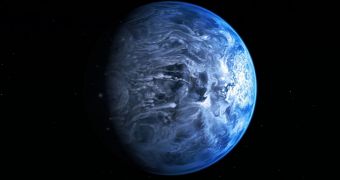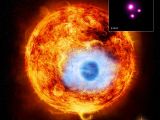A consequence of the common methods used to detect new planets around distant stars, most of the exoplanets we know of are quite large and quite close to their star. Because these planets are so close, their effects on their parent star are much easier to detect from Earth.
But our current and obviously lacking models for planetary formation don't explain how these huge planets, hot Jupiters as they are called, can form and survive in in such proximity to their stars.
This is why researchers are turning their attention to these peculiar planets as well, not just the few that may be Earth-like.
For example, a new study of HD 189733b provided some interesting new details about the "blue marble" planet.
The color is a result of high concentrations of silicate particles in its scorching hot atmosphere, at about 930 degrees Celsius (1,700 degrees Fahrenheit). What this means is that, on this planet, it's raining glass, sideways because of the radiation from the star.
This radiation is also causing the planet to lose a significant amount of material from its atmosphere, some 100 million kilograms (220 million pounds) to 600 million kg (1.3 billion pounds) every second.

 14 DAY TRIAL //
14 DAY TRIAL // 
